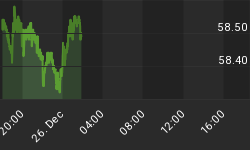Here is a collection of my post-CPI tweets (follow @inflation_guy) and some additional thoughts:
- Looks like +0.09% on Core CPI - incredibly, rounded UP. Lots of little drags - vehicles, computers, utilities. Some very curious.
- y/y core down to 2.10%, no rounding needed. This is a BIG downside surprise in CPI, which was biased to a round-up.
- Energy subtracted from headline - last time for that for a while.
- Electricity, which is 3% of overall consumption, fell 1.3% on the month. That's a lagged response to natural gas' decline, probably.
- CPI number gives a bit more latitude for the Fed's QE3. Not that 2.1% vs 2.2% is great, but will make contours of infl look better.
- Primary rents +0.3%, OER +0.2%...together is 30% of overall basket, and the stickier part.
- Accelerating CPI groups: Med Care, Other (12.2% of basket); decelerating: Food/Bev, Housing, Apparel, Transp, Educ/Comm (81.9%!)
- ...fair amount of CPI deceleration was base effect of last July falling out. Pressure is on the inflation bulls (me incl) hereafter.
- VERY interesting...Cleve Fed's Median CPI +0.2%, Y/Y stayed at 2.3%. This is the most that Median has been above Core since 2009.
I don't think my view of the likely trajectory of core CPI has changed much. Housing remains buoyant, and certainly there are no signs that housing inflation is going to decelerate going forward, since surveys of primary rents are rising comparatively briskly. If housing isn't going to slow down, then it's hard to get a meaningful deceleration of core CPI going.
The base effects at work here shouldn't be underestimated. Apparel prices rose, and rose on a seasonally-adjusted basis, but year-on-year apparel inflation declined. As the chart below shows, however, this doesn't mean that apparel prices are falling and in fact the character of apparel price inflation still appears to have undergone a tectonic shift.

August 2011 core CPI, which will fall out of the year/year calculation next month, was +0.24% and will create a decent chance of another slip lower in core CPI. But the four months following that were all +0.17% or less, which means that the local low for y/y core CPI is almost surely in August. If traders perceive a bigger swing in the CPI than is actually happening, it will represent an opportunity to get long breakevens or inflation swaps at lower-than-current levels.
Outside of core inflation, there are relevant trends building in food and energy. Although retail gasoline prices are only up about $0.12/gallon from a year ago, they're also up $0.40 in the last six weeks at a time when most observers were expecting continued low prices. Some of this is Middle East tension, but a fair amount of it is related to domestic refinery issues and, of course, the increase in money. Energy prices will continue to ebb and flow, but gasoline prices within $0.40/gallon of an all-time high at a time when the global economy is sputtering at best should not be discounted. "Slack demand" isn't working. Since 2004, retail gasoline prices are up at around a 9% per annum pace (and much faster if you measure from the 2008 lows, which erased 2004-2008 gains), while M2 is up at a 6% per annum pace over the same period. This just in: more money in the system means that money depreciates relative to hard commodities.
While the current cycle in grain prices, to be followed soon by livestock prices, is likely amplified by the domestic drought and other food crop problems worldwide, I think it is unlikely that we will see prices back to the lows of a few years ago. As I pointed out here, real grain prices are not particularly high at all, and arguably are low considering the current crop condition.
These are not in core inflation, and there is nothing that Fed officials can do to restrain these prices separately from their efforts to restrain all prices; accordingly, it is still reasonable for policymakers to focus on the more-stable core CPI and median CPI in setting policy. It doesn't mean they don't care about food prices going up. It doesn't mean they want everyone to live without energy. It is just that they need to focus on a less-noisy series. At the same time, though, a rise in food and energy prices narrows the window during which the Federal Reserve can point optimistically at headline inflation being below core inflation. If the Fed is going to ease, I think it is going to be in September or it's not going to happen. And if that's going to happen, then I think we'll hear Chairman Bernanke speak generously about the capabilities of monetary policy at the Jackson Hole conference, which begins August 30th.
Astonishingly, despite weak inflation data and a very weak Empire Manufacturing report (consensus was +7.00 and the print was -5.85, bonds sold off anyway with the 10-year yield up 5bps at 2:40pm (when I am writing this) and real yield actually up more (10y TIPS +7bps to -0.46%). Equities traded listlessly, and commodities rallied. So, even though I was completely wrong yesterday about what was going to happen with core CPI, I was fortunately also wrong about the market reaction. In this case, two wrongs make a right, although I don't recommend pursuing this method of prognostication on a regular basis.
















